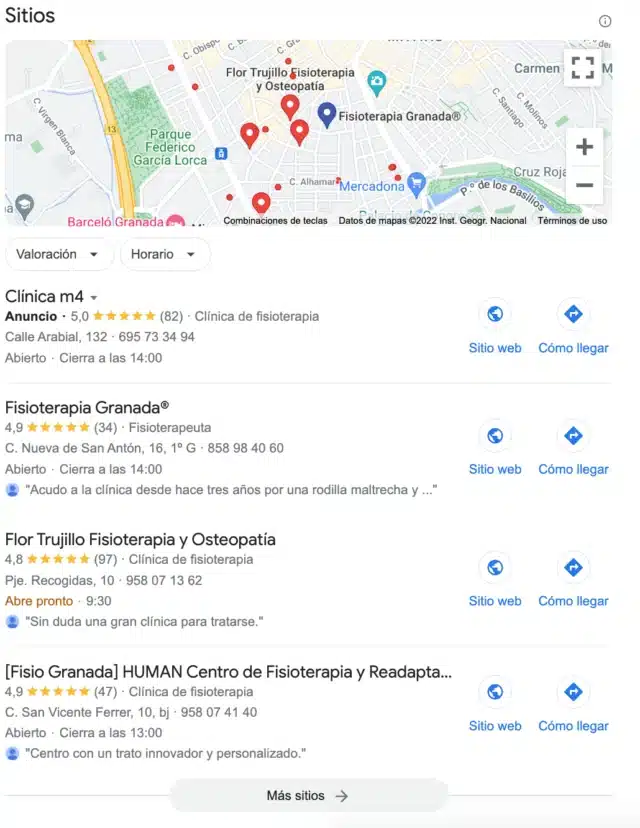Do you know that you can improve your company’s sales by doing an analysis of the competition? Yes, that’s right. Performing a competitor analysis is a very important step in your marketing strategy.
And how to do it?, How can it help you? We detail everything in this post, so keep reading!
Before we begin, what is a competitor analysis? What is it for?
A competitor analysis is an investigation in which you know how the market is in which you are positioned or want to position. It helps you to know what are the best actions to differentiate yourself from competitors and achieve the best results.
The idea of doing a competitor analysis is not only to know which companies do the same as you, but to understand where your company is and identify all kinds of opportunities. It is not about seeing which companies are the leaders in the market, but about knowing the strengths and weaknesses of both your company and others to see where there is a competitive advantage.
Therefore, the benefits of doing a competitor analysis are:
- It allows to have a point of reference through which an analysis of the evolution of a business or company will be made.
- Know market segments that you were not taking into account for your product / service before.
- Analyze consumer needs and meet them with new products and services that are not taking into account the competition.
- See the existing opportunities in the market.
- Know your strengths and weaknesses and those of companies similar to yours.
5 steps to make an analysis of the competition
If you want your marketing strategy to have the best actions and get to be better than your competitors, write down these 5 steps. Read!
1. Identify your competitors
The first essential step is to identify the companies that are in the same sector as you, who are they?, where are they?, what products or services do they have?.
The best way to identify them is to do it through a search engine like Google. Search for different keywords related to your activity and you will be able to see the most relevant companies. For example, if you are dedicated to physiotherapy, look for ” Granada physiotherapy clinics” and you will see the highlights.

Once competitors have been identified, it is important to classify them into direct and indirect to position ourselves at a specific point in the market.
- Direct competitors are formed by those companies that offer a product / service identical to yours and are also in the same geographical area.
- Indirect competitors are formed by companies that offer a similar product/service but not the same as yours.
2. Use a tool to measure the data
Having a specific tool that helps you know data about your competition will help you greatly. It will give you very relevant data and graphs, such as the reach they have with their website, the interaction they are having…
Some of the best tools are: Se Ranking, Clientify or Google Alerts. Highlight the most relevant data of each of your competitors, both positive and negative. This will make you understand your competitors better and give you an advantage in knowing what you have to do.
3. Analyze what the competition’s sales process is like
It is very important to know how the competition is generating customers and what is the sales process that is done. For a client to choose another company instead of yours, you must know why they are doing it.
One way to do this is by being a customer of that company and seeing what they are taking advantage of in order to do better than them.
The questions you must answer to know more about how companies sell are, what sales channels are you using?, what is the price of competing products?, why is the customer loyal to other brands?
4. Analyze your competition’s SEO
SEO is very important within an investigation, and you may wonder. Why?.
As we have seen before, one way to know businesses similar to yours is to search for them through a keyword in Google, and the most relevant ones will appear. This tells us that the SEO strategy is key to appear in those first results and that consumers find your brand.
Having an analysis of the main keywords by which users find companies and knowing how they are positioning will help your company to be part of them and stand out.
5. Research the marketing actions that the competition is carrying out
Do your competitors have social networks?, What publications are they making on social networks?, How often do they publish?, Are they carrying out promotions?, What services do they highlight?, all these questions are basic to analyze the actions that companies similar to yours are taking .
This part of the research is done directly by searching for your social networks, websites and analyzing it. In addition, it can also give you information about its customers. You will be able to see if they interact with them, if they get sales through these channels and much more.
Finally, when is it time to do a competitor investigation?
If you are going to carry out the launch of a new project, the time to do a competitor research is now. It will be perfect to help you know the state of the market and that you can make decisions, for example, when carrying out promotions or pricing policy.
Tell us, do you know another tool to investigate companies? We read you in comments! 🙂

